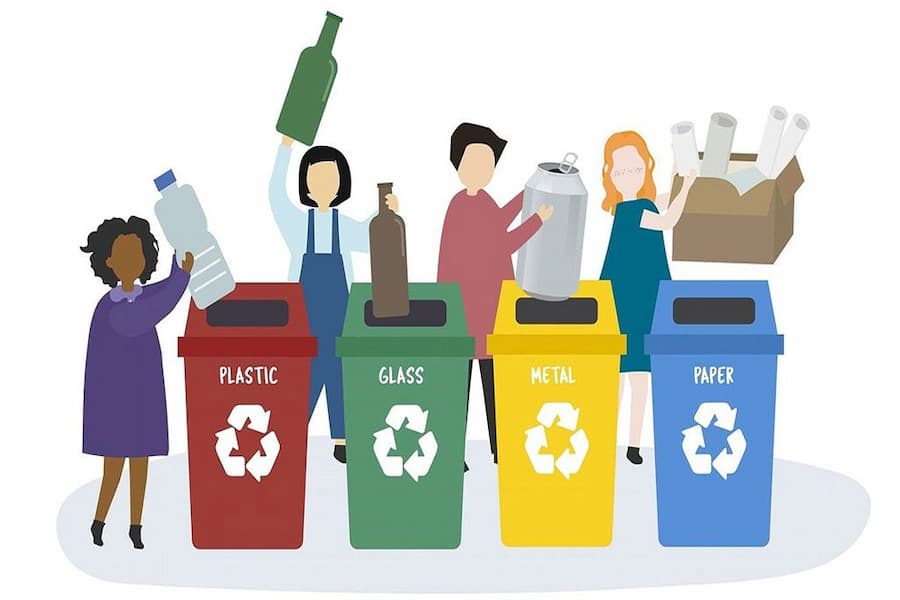Classroom Waste – It may surprise you to learn that schools generate more paper refuse in one year than many households do in a lifetime. Each year, we buy brand-new school supplies notebooks, pencils, and binders to get our children off to a good start in school. By the end of the year, however, so many of these supplies end up in landfills, especially paper. Paper recycling in schools can significantly improve with these few simple steps. One effective approach would be to Small skip for hire for collecting recyclable materials to make it easier for the students and staff to recycle paper waste.
Use Recycled Materials in Art Projects
Probably the best way to show your students how to reduce wastage is by reusing materials in some creative project within the classroom. Materials that were to end up in landfills may turn out to be wonderful pieces of art and also stimulate students’ imagination. Plastic bottles, after they have been cleaned, could become vases, holders of pencils, or even sculptures. They may even be used as instruments for their musical creativity. By engaging children in such activities, teachers can show them the value of sustainability and encourage them to see the potential within everyday items that have been thrown away. This practical approach does not just minimize waste but also encourages creativity and critical thinking.
Make Availability of Recycle Bins Easy
Supplying each classroom with its own set of trash and recycle bins can go a long way in encouraging recycling. In case the procedure of recycling is easy, there are much higher chances of participation among students and staff. Named bins throughout the school would invite everybody to follow a full recycling program and provide an example of how to correctly dispose of their litter. Labels with pictures help children easily understand and recognize these several recycling bins and, thus, know where to put different recyclable materials. This way, the process is made easy and helps children cultivate the habit of recycling from an early age.
Reduce Paper Waste
Schools tend to use a lot of paper every day; however, there are various ways through which the schools can make their operations more eco-friendly. Before printing, ask yourself if the work has to be on paper. The simplest ways of reducing paper waste include changing paper forms to digital ones. Moreover, printing on both sides of the paper and black-and-white printing can significantly cut down the amount of paper used. Another significant contribution that can be made is by encouraging students to submit assignments electronically and by distributing and collecting homework through digital media. If the schools can implement such practices, it will help conserve a lot of paper and thereby save the environment.

Donate Old School Supplies
At the end of the school year, as students clean out their lockers and classroom waste, large trash bins are often wheeled out and students are told to throw everything away. Rather than just pitching things in the landfill, take a minute to sort materials. Take out recyclables and set aside gently used supplies that could be donated or reused in the coming school year. Books, notebooks with new pages, pens, pencils, and other items can often be reused by other students or donated to local community organizations. This will minimize the wastage for schools, at the same time helping students and families in need of school supplies. This can instill a culture of reusing and donating.
Compost Cafeteria Leftovers
Composting is one of the best ways to minimize food waste in schools. Set up composting bins in the cafeteria where students can deposit food waste instead of tossing it into the trash. It reduces landfill volume and produces nutrient-rich compost that can be utilized in gardening or landscaping around the school. School garden composting can reduce the school’s expenses by reusing soil and fertilizer while teaching students composting benefits. Students gain an in-depth understanding of sustainability and environmental stewardship through this practice.
Conclusion
Simple practices like using recycled materials for artwork, keeping recycling bins in the classroom easily accessible, reducing paper waste, reusing old supplies by way of donation, and composting cafeteria leftovers can go a long way in reducing classroom waste. It helps in the promotion of sustainability, encouraging creativity, and teaching environmental responsibility to students for a greener school. Visit Toto 4D Macau for more informative blogs.











